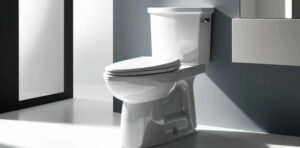How Flap Barrier Turnstiles Support Hybrid Work Models and Smart Offices
Discover how flap barrier turnstiles enhance hybrid work models by streamlining secure access in smart offices and flexible multi-tenant environments.

The modern workplace has undergone a seismic transformation in recent years. The traditional nine-to-five work model is evolving into a more flexible, dynamic structure—commonly known as the hybrid work model. Alongside this shift, commercial office spaces are being reimagined as smart offices, blending physical infrastructure with intelligent systems to boost efficiency, safety, and user experience.
Within this context, Flap Barrier Turnstiles have quietly emerged as a powerful tool in shaping how people interact with physical workspaces. While they’ve long been associated with secure access control, their role in hybrid workplaces and smart building ecosystems is now more relevant than ever.
This article explores how flap barrier turnstiles are adapting to support the hybrid work era, contributing to automation, access intelligence, occupancy insights, and seamless integration with the digital fabric of the modern office.
Rethinking Access in the Hybrid Era
Employees can divide their time between working remotely and in the office thanks to hybrid work. This flexibility brings many advantages, but it also introduces new operational challenges for office managers and facility administrators.
One such challenge is unpredictability. Traditional access control systems assumed consistent schedules and static headcounts. Hybrid work, on the other hand, involves fluctuating attendance patterns. Some employees may come in twice a week; others may be on staggered shifts. Without the right infrastructure, managing access based on these fluid schedules becomes inefficient, prone to error, and difficult to track.
Flap barrier turnstiles address this challenge by offering a controlled, automated entry point that functions in sync with employee schedules. When integrated with cloud-based access control or booking systems, these barriers only activate access for employees who are scheduled to be on-site. This eliminates confusion at entry points, reduces the burden on front desk staff, and aligns physical access with digital planning.
The Role of Data in Space Optimization
One of the most critical aspects of managing a hybrid workspace is understanding how employees use the office. Facility managers need insights into occupancy trends to optimize layouts, allocate resources, and manage energy usage. This is where flap barrier turnstiles become more than just entry systems—they become data collection nodes.
Each time an individual passes through a flap barrier, the system logs the event in real time. With proper analytics integration, these logs can be transformed into rich insights. Building administrators can see when peak entry and exit times occur, identify underutilized zones, and even monitor which departments are using the space most frequently.
For example, if a particular floor sees only 30 percent occupancy across the week, managers can consolidate teams, reduce energy consumption in that area, or repurpose the space. These adjustments not only lower operating costs but also improve the user experience by ensuring that office environments reflect actual demand.
Seamless Visitor and Contractor Management
Hybrid workspaces often involve a mix of full-time employees, part-time workers, freelancers, and visitors. Managing access for this diverse group can be complex, especially in large or multi-tenant buildings. Flap barrier turnstiles, like those offered by Turboo Turnstile, simplify this by acting as a unified access checkpoint that works with various identity credentials.
In smart offices, it’s common for visitors to receive digital QR codes or mobile passes in advance. When they arrive, these credentials can be scanned at the flap barrier to grant temporary access—no need for a receptionist to manually check in each guest. For short-term contractors or hot-desk users, permissions can be time-bound and location-specific, ensuring they can only access designated areas for the duration of their assignment.
This system reduces administrative overhead, minimizes the risk of unauthorized access, and ensures that everyone who enters the building is accounted for—critical for both security and compliance.
Contactless and Touchless Access
Health concerns brought about by the COVID-19 pandemic accelerated the demand for contactless interactions in public and commercial buildings. Flap barrier turnstiles support this need by enabling touch-free access via mobile credentials, facial recognition, or proximity cards.
Instead of pressing buttons or manually rotating turnstiles, users simply approach the barrier and present their credential—often without ever touching a surface. The flaps open instantly upon validation, allowing smooth and hygienic entry. This feature is especially important in high-traffic lobbies or where a diverse set of employees and guests are moving in and out frequently.
Touchless access is not only a safety enhancement—it’s also an expectation in modern, tech-forward workspaces. It reinforces an organization’s commitment to employee well-being and aligns with broader smart office goals of minimizing friction in daily operations.
Time and Attendance Integration
In hybrid offices, tracking work hours accurately is crucial for HR, operations, and compliance. Traditional punch-in systems often fall short in environments where people come and go at different times or work partially from home. Flap barrier turnstiles, when connected to time and attendance platforms, offer a more reliable solution.
Every authenticated passage through the turnstile is timestamped and linked to the individual’s employee ID. This allows organizations to automatically log arrival and departure times without requiring additional check-in steps. In contrast to swipe-only entry systems, turnstiles physically enforce entry, ensuring that the person who scans their ID is the one actually entering.
Over time, this creates a dependable attendance log that integrates with payroll, performance evaluations, and workforce analytics. It also supports flexible working policies by offering a clear, auditable record of who was present in the office and when.
Emergency Preparedness and Safety Compliance
Even in the most flexible work models, emergency protocols remain a constant requirement. Whether it’s for fire safety, health monitoring, or evacuation drills, companies must ensure that every person in the building is accounted for and can exit safely in an emergency.
Turnstiles with flap barriers help achieve this objective by allowing for real-time occupancy tracking. When an emergency occurs, administrators can instantly see how many people are inside and which entry points were last used. This information helps emergency teams prioritize zones and confirm when the building has been cleared.
Moreover, the barriers themselves are designed to support emergency exit procedures. In most systems, the flaps retract automatically when triggered by a fire alarm or power failure, allowing free passage without obstruction. This ensures that access control never becomes a barrier to safety.
Scalability and Future-Proof Infrastructure
The beauty of flap barrier turnstiles in smart offices lies in their scalability. As your workplace evolves—adding new floors, transitioning to new access control platforms, or adjusting team structures—these systems can be reconfigured without being replaced entirely.
Modern models support a wide range of integration protocols, from API-based cloud platforms to on-premises legacy systems. They can work with everything from basic RFID readers to cutting-edge biometric scanners. This adaptability allows businesses to make phased upgrades and align security infrastructure with their broader digital transformation strategies.
In coworking or multi-tenant buildings, the same flap barrier system can handle multiple identity databases, granting access based on tenant-specific permissions. This modularity is critical for environments where tenant turnover is frequent, or when expanding access across new business units or satellite teams.
Building Brand Trust Through Experience
In a world where employee experience and workplace design matter more than ever, the access experience at the front door sets the tone for the entire day. Clunky, outdated, or overly restrictive entry systems can create a negative impression and hinder adoption of hybrid policies.
Flap barrier turnstiles enhance the experience by combining physical security with smooth, intuitive operation. The seamless whoosh of the flaps opening, paired with sleek LED indicators and smart credential support, projects a brand image of professionalism, modernity, and confidence.
Clients, employees, and guests feel the difference. It’s a small detail—but in today’s competitive talent and business landscape, those details add up.
Conclusion
Hybrid work and smart offices are no longer concepts of the future—they are today’s reality. As businesses adapt to more flexible schedules, variable occupancy, and heightened expectations for user experience, their infrastructure must evolve too.
Flap barrier turnstiles, once viewed purely as access control devices, now serve as intelligent gateways into this new way of working. They offer a secure, contactless, and data-driven approach to managing access in fluid, fast-paced environments. From space utilization insights to visitor automation and emergency readiness, they touch every part of the hybrid work equation.
In short, they are no longer just hardware—they are part of a strategic digital workplace solution.







